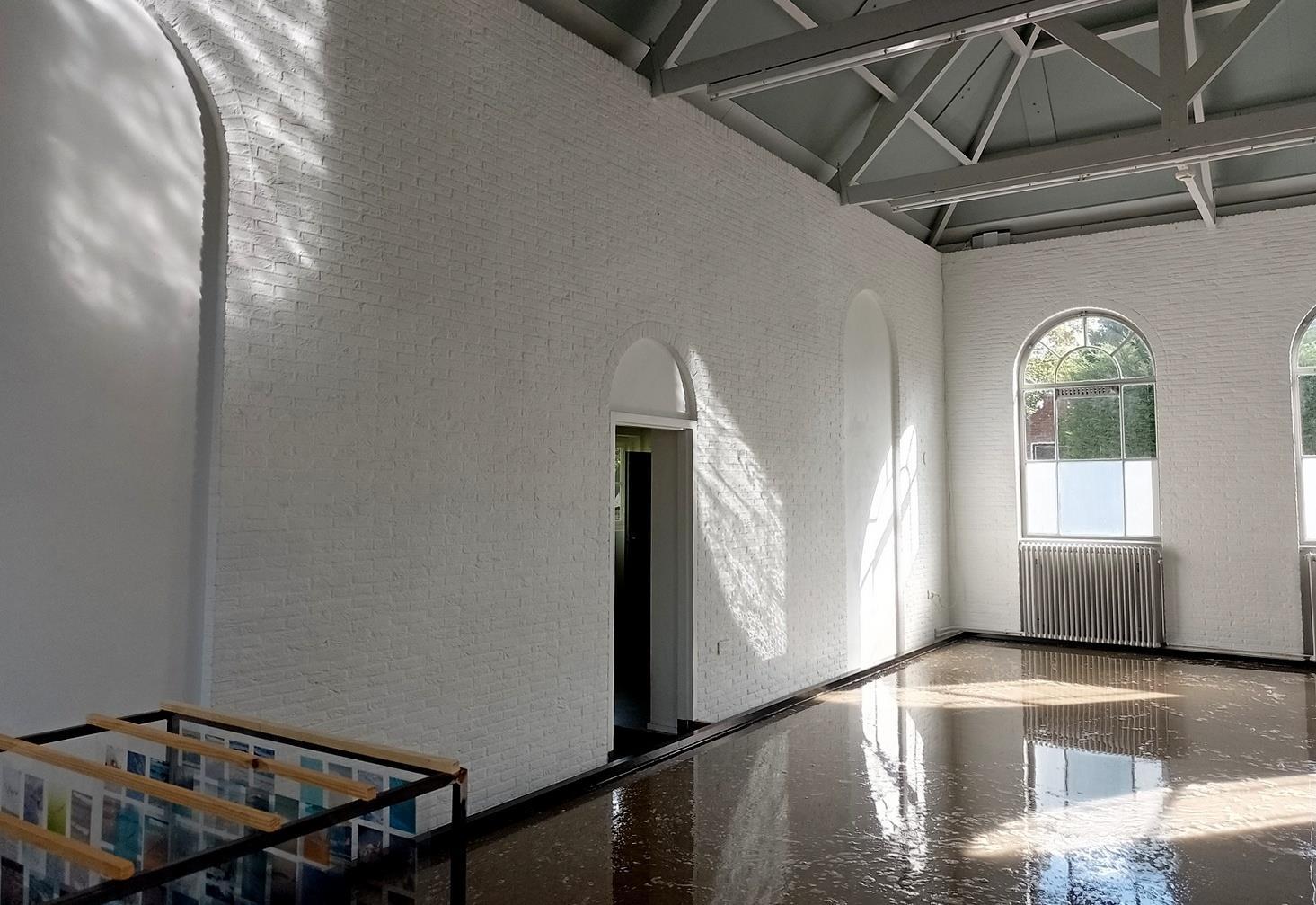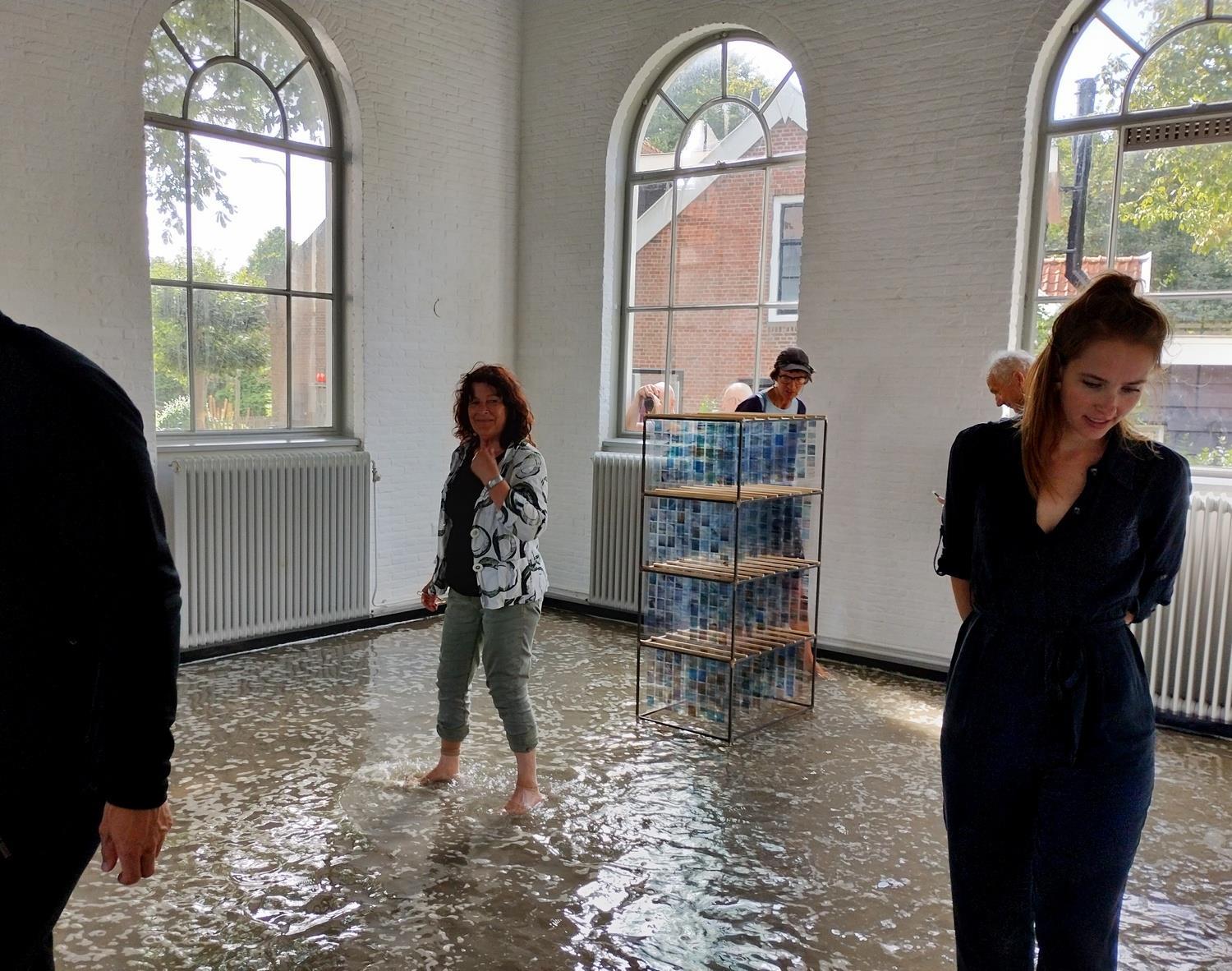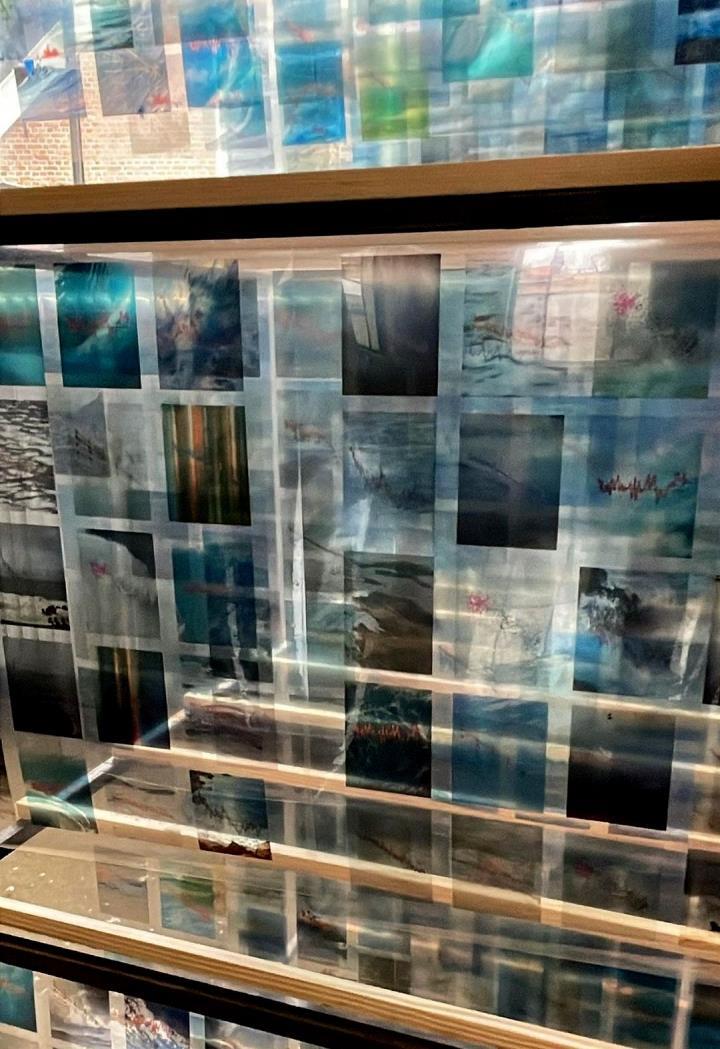
courtesy of ©2024

Click here for the video of the work and the opening


courtesy of ©2024

Click here for the video of the work and the opening
i.d. of a shared history of mobility
Foundation Bewaerschole
August 24 | September 22, 2024 hans overvliet




























With the support of technology, multinational corporations have turned us into a hyper-energy, hyper-fast and all destroying species. This is undermining existing social relationships, traditions, institutions and ways of thinking. Detached from our values, we have became all drifters; ‘nomads’, so to speak. On top of that, our existence is overloaded with an infinite number of possibilities. As a result: those who can afford it indulge in a frenzied global nihilistic consumerism. Downright hilarious is the fact that each of those possibilities has, in a sense, long since been realised; virtually and/or physically . . . .
The shere endless consummation of all those possibilities has disastrous consequences for humans, animals and things. From cultural appropriation to the physical destruction of the (cultural) environment.
The artwork in Bewaeschole consists of an outline filing cabinet, standing in a layer of some 5 centimeters of clear, salty water. With a layer of 2 cm. of washed salty local sand on the bottom. Inside the filing cabinet 64 sheets containing 1280 images of all possible manifestations of water from all over the planet.
Superimposed over these small pictures, graphs referring to global warming.
To see details in order to reach that information, one has roughly two options: either risk wet, possibly destroyed shoes or take off your shoes and get wet feet.
Here, at least, one can choose . . .
So it seems that the nomad described above is no longer tied to anyone or anything, is no longer responsible for anything, racinglonger responsible for anything, is racing across the planet in search of ‘unique’ Instaimages. In the process, massively overloading the planet. With all its consequences. The perverse tragedy: those who contribute the least to global warming are the first and at the same time the most affected.
The work DISTANT SUFFERING XXXVII | i.d. of a shared history of mobility aims to be a work that lets people wander, using their various physical senses, into hopefully a multitude of induced associations. Perhaps at the same time rationally, emotionally and intuitively (Spinoza’s immediate knowing). Hopefully even getting lost in all sorts of directions in the wandering itself.
The work also tries to be a reflection on the nomadic, now in the Deleuzian sense of the word, of Bewaerschole as an art place itself. I share his view that the agility of this nomad consists mainly in the dynamics of ‘becoming’ rather than the static develop-ment of ‘being’. In short, of making ‘the difference’. Over the past three decades, I have seen a number of exhibitions in Bewaerschole that have not only travelled with me for years, but of which I am deeply convinced that they are all part of the creation, of the rhizomatic genesis of this image. In which local rituals such as the cleaning the workhorses in the
such as the cleaning the workhorses in the sea after a winter in their stables, the socalled ‘straô’ and of course, the shadow of the ever-present trauma of the 1953 floads are never far away . .
The sound quote by the American band The National you can hear (Leave your home, Change your name, Live alone) refers to an autobiographical element of this nomad. At the age of 12, we moved from Leiden to Cuijck aan de Maas; at the time a village with about 2,500 inhabitants. The change from family to acquaintances and later friends, from city to countryside, from the Leiden dialect to a Brabant one, from atheneum to u.l.o., from a culture dominated by the word to one dominated by the image, it was a huge transition. Despite eventually being fully accepted, I always remained ‘hans’; I was never given a nick-name like everyone else in the village - during inimitable inauguration rituals.
Since 2013, by means of the ongoing art-series DISTANT SUFFERING, the Dutch artist Hans Overvliet investigates the role of the media in their representation of (military) violence. This, in the context of themes as perception, memory and identity formation. Overvliet uses a various range of media, symbols and codes, bringing together dichotomies like beauty and violence, refinement and brutality, the sublime and the vulgar.
As a reporter, Overvliet was an eyewitness to the events in the Middle East during the 1980s. Of course these experiences resonate in DISTANT SUFFERING. So aspects of power, politics, exclusion, censorship and the connection between artist, artwork and viewer infiltrate his multifaceted conceptual oeuvre.
Martha Jager, curator Vleeshal in Middelburg about the oeuvre: The dedication to art as a relational verb is central to Overvliet's work. On the one hand, the balance between poetry and criticism is special, so that the work never becomes bitter or pedantic, while at the same time the dialogue with the viewer is actively maintained. It is a tender form of activism that moves and urges action and also continuously questions the role of art.
Elements of DISTANT SUFFERING were exhibited in the Netherlands, Belgium, Pakistan, England, France, Italy, the Czech Republic, Denmark, Albania, Germany, Lebanon, the U.S.A., Brasil, Argentina and Sweden.
In 2023, his whole body of paper collages ( 1999 – 2012 ) joined Geert Verbeke’s renowned collection of collages and assemblages.
In 2024 - 2025 the whole oeuvre of DISTANT SUFFERING was exhibited in the museum part of the Verbeke Foundation. All the work will then be included in the permanent collection.
Next to his art-work he is, together with his wife Willy van Houtum, the founder and every day guardian of ruimteCAESUUR, the 29-year old space for contemporary art in Middelburg in the province of Zeeland.
Here you’ll find his extended portfolio. Here you’ll find his condensed portfolio.
Colophon thanks
Willy van Houtum, Giel Louws
Board & voloteers Bewaerschole
Tonnie Kostermans
curator for Bewaerschole
Geeske Pluijmers
financial support
Mondriaan Fonds photo’s
Geeske Pluijmers | Jorieke Rottier
Willy van Houtum | Giel Louws
Toon Truijens | Sophia Meij Video
Jochem Weststrate
work
‘out-line’ filing cabinet, 134 cm. x 49,5 cm. x 71 cm. [ h x w x d ]
weathering steel [ 10 x 10 mm.],
wooden bars 1 x 1 cm.,
Nobo OHP Transparency Film, Inkjet prints with Canon TS705
sided acid-free tape filled with 1,280 images of waves on 64 sheets, statistics
Global Warming stripped of their numbers
Context of the work
music quotation
The National | Vanderlyle Crybaby Geeks
2010
installation of ‘the pond’
Garden Centre Verstraten Walhout
Andriaan & Daniël Walhout


